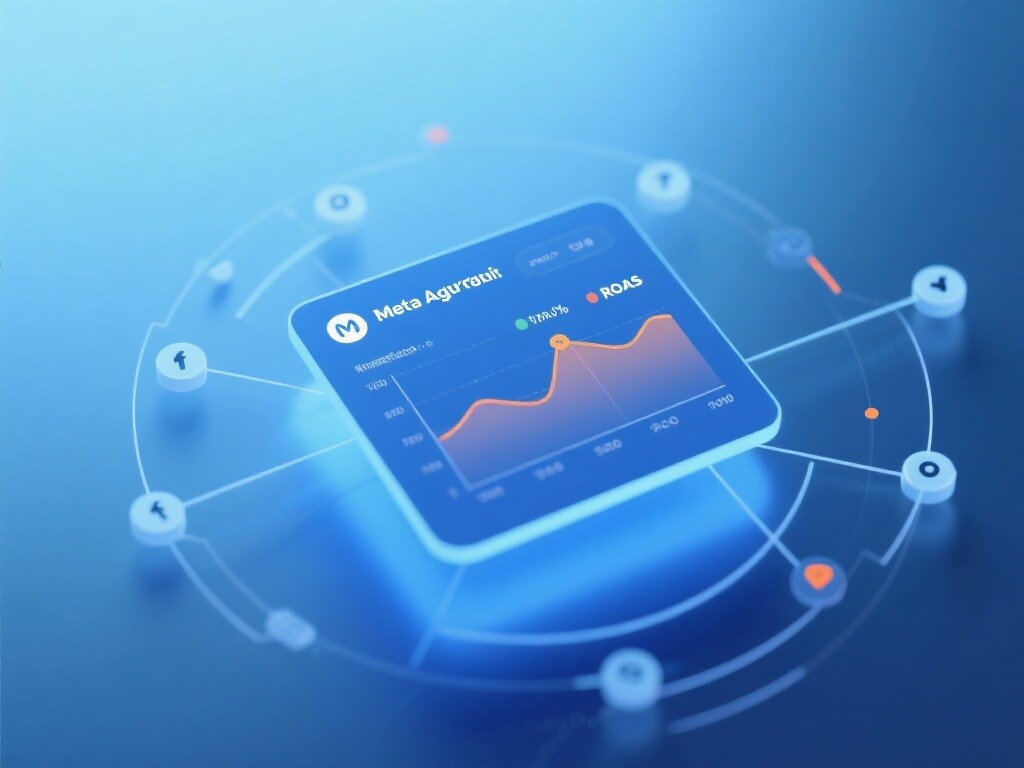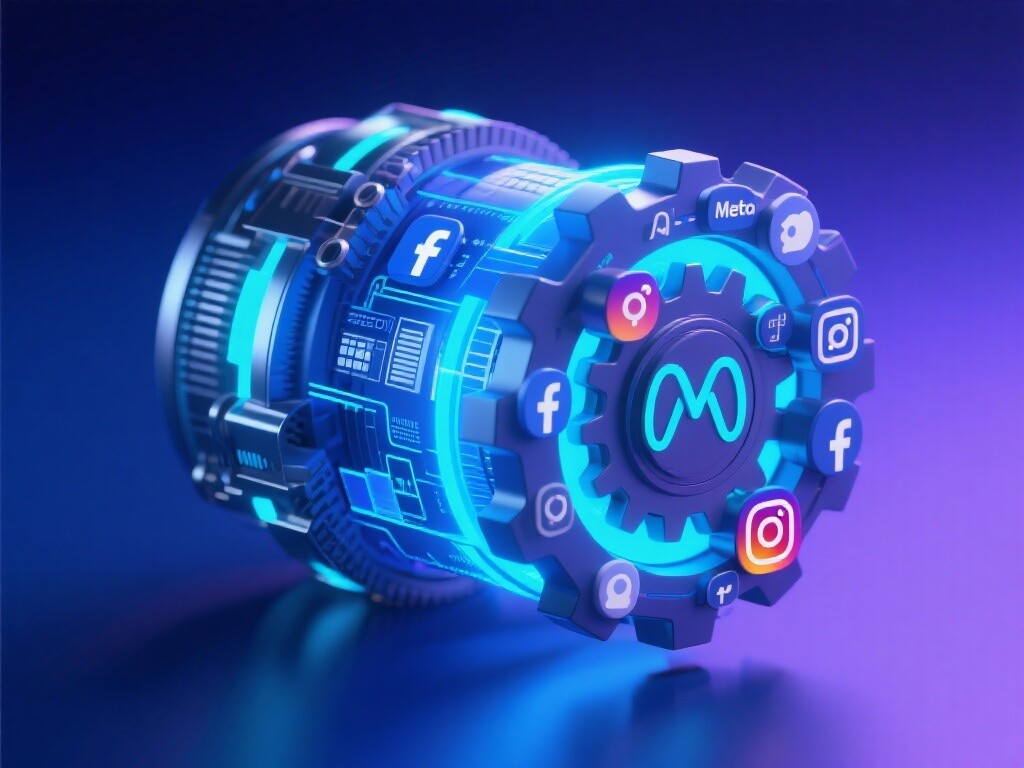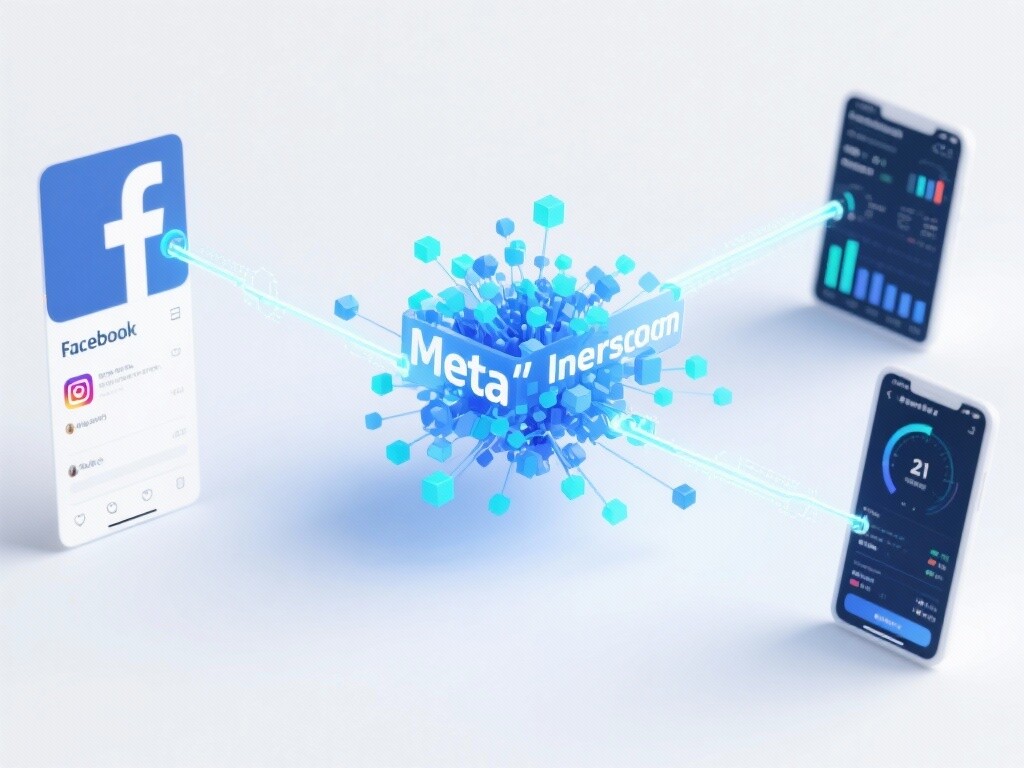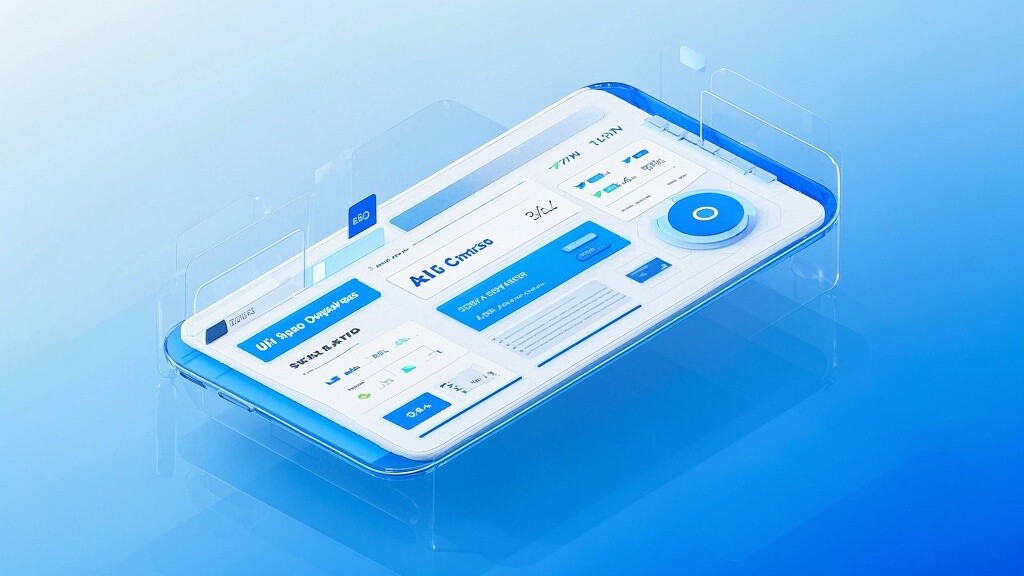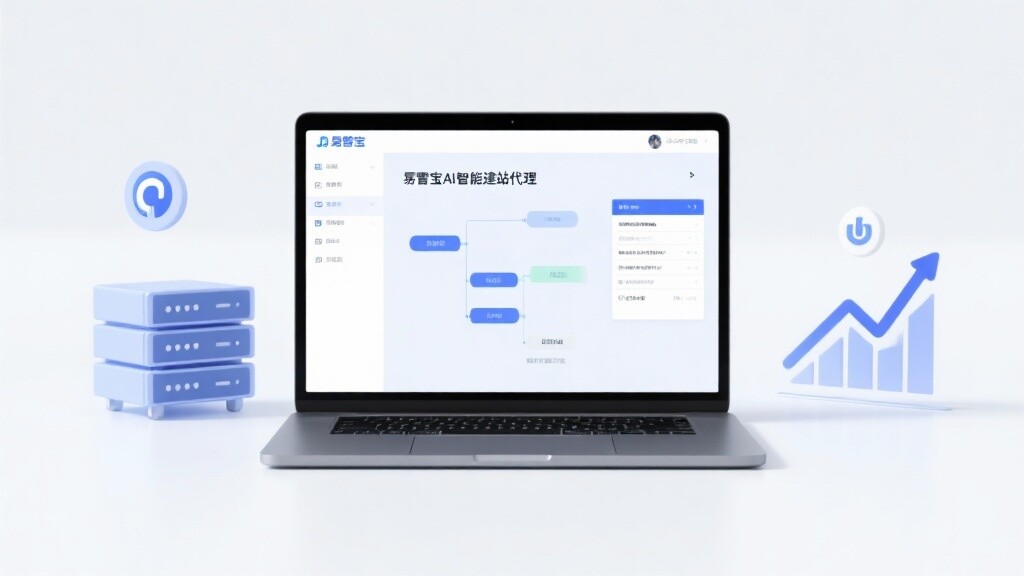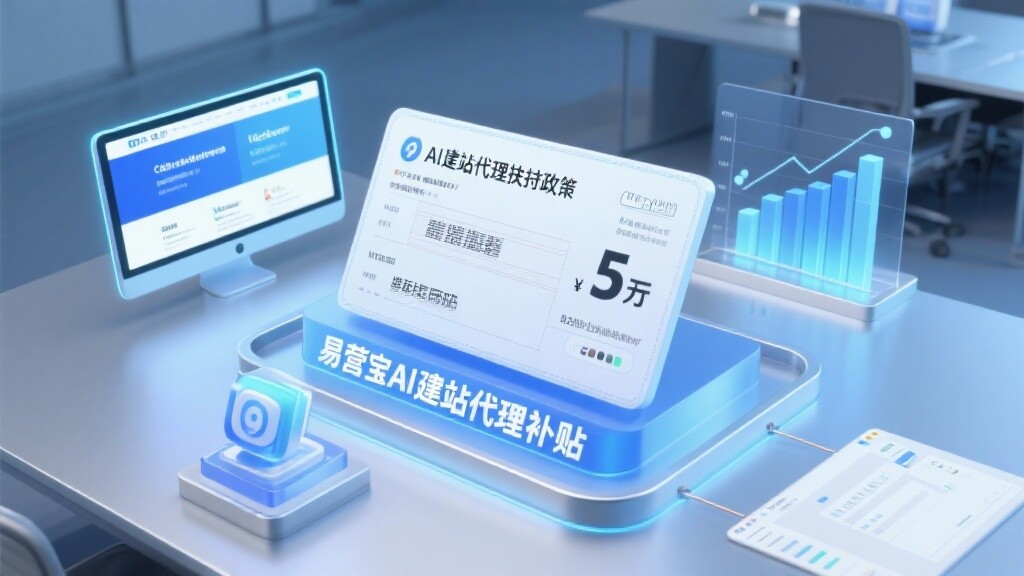Easy Camp Cloud Intelligent Website Construction and Marketing System Platform!
Meta Advertising Definition: An Interest-Driven Social Media Marketing Engine
Meta Ads is a paid advertising system that runs on all social platforms owned by Meta Platforms, Inc. (formerly Facebook), including Facebook, Instagram, Messenger, and Audience Network .
The core value of Meta Ads lies in its **"interest-driven" and "data-rich" characteristics.** It allows advertisers to perform highly refined audience targeting based on detailed user demographics, interests, online behavior, device usage, and historical interaction records.
The core differences between Meta advertising and search engine advertising (SEM):
Meta Ads' strategic goal is to stimulate potential demand and drive conversions through compelling creative content, even before users have formed a clear need.
The history of Meta advertising: from simple banners to panoramic intelligent targeting.
The development of Meta advertising reflects the commercialization, mobilization, and AI-driven evolution of social networks:
1. Early Stage: An Initial Exploration of Banner Ads and Platform Data (2006-2012)
Ad format: Initially limited to simple banner ads in the right sidebar of Facebook.
Location basis: Based on very basic demographic information (age, gender, location).
Technical characteristics: The ad management interface is rudimentary, with low automation, and its main objectives are simple clicks and impressions.
2. Maturity of mobile and advertising management platforms (2012-2018):
Mobile Revolution: With the widespread adoption of smartphones, Meta has shifted its advertising focus to mobile news feeds .
The Ads Manager system is now available: a fully functional advertising management platform has been launched, allowing for fine-grained settings of target audiences, budgets, and bids .
Facebook Pixel launched: This landmark technology allows advertisers to track user behavior on off-site websites , laying the foundation for remarketing and deep data attribution.
3. The Era of Machine Learning and Automated Deployment (2018-2023):
CBO and Value Bidding: Introducing Campaign Budget Optimization (CBO) and value-based bidding (such as minimum ROAS) to entrust budget allocation and bidding decisions to machine learning AI .
Privacy and Attribution Challenges: With the introduction of the iOS 14+ privacy policy , ad tracking has become more difficult. Meta has introduced technologies such as the Conversions API (CAPI) to address data loss and attribution challenges.
4. Meta renaming and overall integration (2021 to present):
Meta Brand Unification: Unify advertising across platforms such as Facebook and Instagram under the Meta Business Suite .
Advantage+ Smart Product Line: Launching fully automated products such as Advantage+ Shopping Campaigns , allowing AI to take charge of comprehensive optimization of creativity, audience, and placement, further strengthening the trend of automation and simplified operation .
The technical principles of Meta advertising: audience mapping and auction mechanism
Meta Ads' ability to achieve precise targeting and high conversion rates stems from its sophisticated audience targeting technology and unique auction mechanism.
1. Core Technologies: Audience Graph and Machine Learning
Principle: Meta collects and analyzes all user interaction data (likes, comments, shares, clicks, viewing time) on Facebook, Instagram, and Messenger, as well as external behavior data (browsing, adding to cart, purchasing) collected through Pixel/CAPI.
Modeling: Machine learning algorithms use this data to construct a deep interest graph of user interests, behaviors, and purchase intentions.
Prediction: When ads are delivered, AI predicts in real time the probability that each user will take the expected action (such as clicking or buying) after seeing a specific ad.
2. Auction Mechanism: Value Determines Bidding Price
Meta ad auctions are not simply a matter of the highest bidder winning; rather, they are determined by the following three factors:
Bid: The amount an advertiser is willing to pay for a specific action (such as CPM, CPC, CPA).
Estimated Action Rate: Meta AI predicts the likelihood that a user will take the expected action (such as conversion) after seeing the ad. This is the core of AI's predictions based on historical data and user profiles.
Ad Quality & Relevance: This includes ad engagement rate, negative feedback rate, and relevance to the target audience . Ads with high engagement and low negative feedback receive higher scores.
Conclusion: Even with a low bid, if your ad content is excellent (high quality/relevance) and the AI predicts a high conversion rate (high predicted action rate), your ad may still win the auction and be displayed at a lower cost.
3. Privacy Compliance and CAPI Technology
Challenge: With the advent of privacy regulations (such as GDPR) and platform restrictions (such as iOS 14+), tracking data through the browser Pixel has become difficult.
Solution: The Conversions API (CAPI) allows advertisers to send conversion data directly from their own servers to Meta, bypassing browser restrictions and ensuring the accuracy and completeness of data tracking , which is crucial for efficient remarketing and optimization.
Meta Ads' Technical Features and Core Positioning Advantages
The power of Meta Ads lies in the depth of its audience targeting and the diversity of its ad formats.
1. In-depth Audience Targeting
Core advantages: Meta provides three main methods of deep localization:
Core Audiences: Targeted based on **interests, behaviors (such as purchasing behavior, travel preferences), demographics (such as education, occupation, family)**, etc.
Custom Audiences: Target audiences based on your existing data , such as website visitors, app users, and customer lists (email/phone numbers). This is the foundation for remarketing .
Lookalike Audiences: Created based on custom audiences (such as high-value customers), AI finds new users whose behavior and characteristics are similar to your existing customers. This is a powerful tool for efficiently acquiring new customers .
2. A variety of visual advertising formats
Features: The Meta platform dominates visual content. Ad formats include **images, videos, carousels, collections, instant experiences**, and Reels videos .
Advantages: It can showcase products in a more creative and immersive way, capturing attention in users' social scenarios .
3. Automated deployment tool (Advantage+)
Features: AI-driven automation tools, such as Advantage+ shopping ads.
Advantages: It simplifies the campaign process. AI can automatically optimize the audience, creative, and placement in real time , making it especially suitable for e-commerce sellers to find the most interested users at the lowest cost.
4. Cross-platform coverage (Omnichannel Reach)
Features: Ads can be run simultaneously on Facebook, Instagram, Messenger, and Audience Network.
Advantages: One-click access to the entire ecosystem ensures that users can be reached across all the Meta products they use.
In-depth application and marketing strategies of Meta advertising
Effective Meta advertising is a systematic project that closely integrates creativity, data, and automation .
1. Marketing Funnel Strategy: From Awareness to Conversion
Top of the funnel (awareness): Use video ads and core interest targeting to increase brand exposure and awareness on a large scale and at low cost.
Mid-funnel (consider): Use carousel ads or featured ads to target users who have visited your website or interacted with your posts, guiding them to the product details page.
Bottom of the funnel (conversion): Use custom audience remarketing to deliver limited-time, high-conversion discount ads to users who added items to their cart but did not pay or who viewed specific products .
2. Creative Testing and Material Iteration
Strategy: Meta advertising effectiveness is highly dependent on creative content. Continuous A/B testing should be conducted, testing different images, videos, copy, and CTAs (calls to action).
Tools: Dynamic Creative Optimization (DCO) allows AI to automatically combine different creative material elements and find the optimal combination.
3. Effectively utilize lookalike audiences.
Strategy: Continuously use "high-value customers" (such as the top 5% of customers with the highest purchase amount) as seed audiences, and create 1% - 5% of similar audiences for new customer acquisition.
Value: This ensures extremely high accuracy in new customer acquisition and significantly reduces CPA (cost per acquisition) .
4. Data Attribution and CAPI Deployment
Strategy: Ensure that both the Facebook Pixel and the Conversions API (CAPI) are deployed correctly. The CAPI can compensate for data loss issues on the browser side.
Value: The more accurate the data, the faster the AI learns, and the higher the efficiency of deployment .
EasyCreative: Your Meta Advertising Certification Expert and Strategic Growth Partner
EasyCreative is not only an expert in Google SEO, but also a certified expert in Meta advertising . We understand how to perfectly combine the high-efficiency traffic-driving capabilities of Meta ads with your website's SEO assets.
Audience Deep Mapping Analysis: We help you go beyond basic interest targeting to build highly accurate custom audiences, similar audiences, and segmented remarketing audiences , ensuring your advertising budget is used on the users most likely to convert.
Creative and Conversion Optimization (CRO): We provide creative content strategies based on overseas user behavior and platform algorithm preferences , and continuously optimize ad landing pages to maximize conversion results.
CAPI and Data Attribution: Assisting you in correctly deploying the Conversions API , resolving data tracking challenges arising from privacy policies, and ensuring the completeness and accuracy of your advertising AI learning data.
Advantage+ strategy empowerment: Helping enterprises build the best Advantage+ asset portfolio to maximize the efficiency of AI-automated deployment capabilities.
Choose EasyCreative and turn your Meta advertising campaigns into a profitable machine with transparent data, predictable results, and a high return on investment .
FAQ
1. How should I choose and allocate my budget for Meta Ads and Google Ads?
The two are complementary, and it is recommended to use them together:
Google Ads: Captures immediate, clear purchase intent (when users are searching). Suitable for allocating budget to product pages and shopping ads .
Meta Ads: Capture potential interests and needs (ignite desire). Suitable budget allocations include brand awareness, remarketing, and new product launches . Budget allocation recommendations: During the launch phase, Meta Ads may be favored to test creatives and audiences; during the stable growth phase, adjustments should be made dynamically based on **ROAS (Return on Ad Spend)** to ensure synergy between the two channels.
2. Why is my Meta advertising cost per acquisition (CPA) getting higher and higher?
A rise in CPA is usually due to the following reasons:
Audience fatigue: Your ads are repeatedly shown to the same group of users who are "tired" of seeing them, leading to a decline in click-through rate (CTR) and engagement rate .
Creative decline: Your advertising ideas are no longer fresh or eye-catching.
Increased competition: Your competitors have raised their bids or entered your target audience. Solution: Continuously iterate and update your creative materials (Creative Refresh) and expand your audience (by leveraging similar audiences).
3. What exactly does "estimated action rate" in Meta Ads refer to?
This is the core of Meta's ad auction mechanism. It refers to Meta's AI algorithm predicting the likelihood that your target users will perform a "target action" you set after seeing your ad.

Customer Reviews
Mr. Wu, founder of a D2C trendy clothing brand
"As a new brand, we needed to quickly build awareness and conversions. The Meta advertising strategy from the Yiyingbao team was key to our success. They helped us create multiple high-converting like audiences and developed a three-stage remarketing funnel . Most importantly, they guided us through the deployment of the Conversions API , ensuring that our ad ROAS (Return on Investing) remained stable above 3.5 , helping us quickly establish ourselves in the highly competitive fashion e-commerce market."
Ms. Sun, Marketing Director of an Education Technology SaaS Platform
"Our customer acquisition cost in the B2B business has always been high. Instead of blindly increasing the budget, EasyAdverts deeply optimized our audience profile . Through precise targeting based on occupation, interests, and device behavior , they focused our advertising budget on high-value decision-makers. As a result, our CPL (cost per acquisition) decreased by 40% , and the quality of the leads we acquired significantly improved . Under EasyAdverts' strategy, Meta Advertising has become one of our most effective B2B customer acquisition channels."
 EasyOperation City Partner Recruitment: Build a Website Rapidly with Zero Foundation!EasyOperation City Partner Program provides entrepreneurs with AI website building, SEO optimization, and global traffic support, lowering the barrier to digital marketing services. With a decade of technical expertise, we help businesses quickly establish multilingual independent sites.
EasyOperation City Partner Recruitment: Build a Website Rapidly with Zero Foundation!EasyOperation City Partner Program provides entrepreneurs with AI website building, SEO optimization, and global traffic support, lowering the barrier to digital marketing services. With a decade of technical expertise, we help businesses quickly establish multilingual independent sites. Changing ad creatives based on drop rate? You might be updating at the wrong frequency!Meta ad creative updates aren't scheduled by time, but determined by data and audience tolerance. Learn how to set update frequency based on market conditions, budget, and ad performance to avoid creative fatigue.
Changing ad creatives based on drop rate? You might be updating at the wrong frequency!Meta ad creative updates aren't scheduled by time, but determined by data and audience tolerance. Learn how to set update frequency based on market conditions, budget, and ad performance to avoid creative fatigue. Does website agency require technical skills? Zero-code project recruitment and franchise guideThis article systematically addresses the technical barriers of website agency, compares mainstream platform policies, and combines the technical architecture and business model of EasyStore's AI-powered website system to provide actionable franchise strategies for zero-experience entrepreneurs.
Does website agency require technical skills? Zero-code project recruitment and franchise guideThis article systematically addresses the technical barriers of website agency, compares mainstream platform policies, and combines the technical architecture and business model of EasyStore's AI-powered website system to provide actionable franchise strategies for zero-experience entrepreneurs. AI Website Agency Support Policy: Maximum Subsidy Up to 750,000 CNYDetailed Explanation of EasyStore AI Website Agency Support Policy Application Requirements, Technology Empowerment System, and Multilingual Website Advantages, Helping Agents Lower Entry Barriers to Global Markets with Real Customer Cases and Data Support.
AI Website Agency Support Policy: Maximum Subsidy Up to 750,000 CNYDetailed Explanation of EasyStore AI Website Agency Support Policy Application Requirements, Technology Empowerment System, and Multilingual Website Advantages, Helping Agents Lower Entry Barriers to Global Markets with Real Customer Cases and Data Support.

